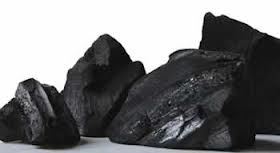(Eds note: See also 2013: Big Coal’s annus horribilis)
A new report from leading investment bank HSBC says the market value of the coal assets owned by Australia’s biggest mining groups could be slashed by nearly half – or more than $US20 billion.
The report by HSBC, an update of a previous assessment conducted in 2012, suggests that BHP Billiton has the biggest exposure in nominal terms – nearly $8 billion. Other companies to be affected are Rio Tinto, Anglo American and Glencore Xstrata.
The valuations are based around the potential impact of a “carbon budget”, a concept that HSBC says is gaining traction globally given the latest climate science, and because the pollution control policies in the two biggest economies and energy consumers, the US and China, are starting to bite.
The International Energy Agency has said that if climate targets are to be met, only 20 per cent of global coal reserves can be developed by 2050 without carbon capture and storage in its low-carbon scenario. The remaining reserves (and resources) would, in effect, be ‘unburnable’.
The UN-sponsored IPCC also concluded that the global economy has a one trillion tonne (1,000Gt C) budget from the beginning of the Industrial Revolution to the end of the 21st century. But only 269GtC is currently left, a fraction of the 779GtC embedded in fossil fuel reserves.
“For investors, the key will be how this diminishing budget is distributed between regions and sectors, and how it impacts capital allocation for both low and high-carbon investments,” HSBC writes in the report “Coal and Carbon Revisited”
“The latest climate science has reemphasised that the carbon contained in global fossil fuel reserves is far greater than the available ‘carbon budget’ for the rest of the 21st century.
“Coal is particularly exposed as it is the most carbon- intensive fuel. In addition, this long-term carbon risk has converged with other factors that are placing downward pressure on coal consumption, notably the growth of shale gas and renewables, as well as tighter air pollution regulations.
The bank estimates that the coal assets of the UK’s biggest mining groups – BHP and Rio, which are both dual-listed in Australia, along with Xstrata and Anglo American, which have large Australian coal assets – are valued by the stock market at around $US50 billion ($A55 billion). Most of this value is loaded up in the next 6 years, but there could be big falls in valuations in coming years.
The reduction in the valuations comes from the decline in the long-run price assumptions for coal. If there is lower demand, there will be lower prices. This, in turns, would many mines uneconomic and reduce cash flow for miners.
The margins for the thermal coal business could fall from $US36 a tonne at the 90th percentile to just $US13/t – a point where miners would struggle to cover sustaining capital expenditure.
HSBC says the issue of stranded asset valuations for coal has become increasingly topical for equity investors and management over the past 18 months. “It is fair to say that the long-run future of coal is now “in play” in commodity and equity research markets,” it writes. “This is not to say that a new consensus has emerged, and we would describe the debate as at an embryonic stage.”
Despite this, HSBC suggests that coal – and the factors that might threaten its future – remains a “blind spot” for some large mining groups. Coal, for instance, remains one of the four pillars of BHP Billiton.
“We believe that mining companies need to be able to demonstrate to investors how their portfolio would prosper in a low-carbon scenario – and how this is being factored into long-term capex,” it writes.
It says some management and generalist investors have questioned whether such a long-term issue was relevant to stock valuations today, particularly given an environment with more pressing issues in the sector, including volatile markets and cost cutting. There is a temptation by many to adopt a wait-and-see approach.
“But value is a function not just of market conditions when they arrive, but also of the perception of the future,” HSBC writes. “We believe the emerging debate around the long-term view on coal is likely to split perceptions of the value of coal assets – and this may create winners and losers within the industry depending on whether firms chose to retain or divest their coal assets, and the outcome in terms of pricing.
“In the past 18 months, no miner has announced that it no longer sees a long-term future in the coal industry. Even if mining firms had made the decision strategically to exit the industry, we think mining companies are unlikely to draw attention to their concerns about long-run value at the same time as seeking to sell assets.“











